SUMMARY
This is AI generated summarization, which may have errors. For context, always refer to the full article.
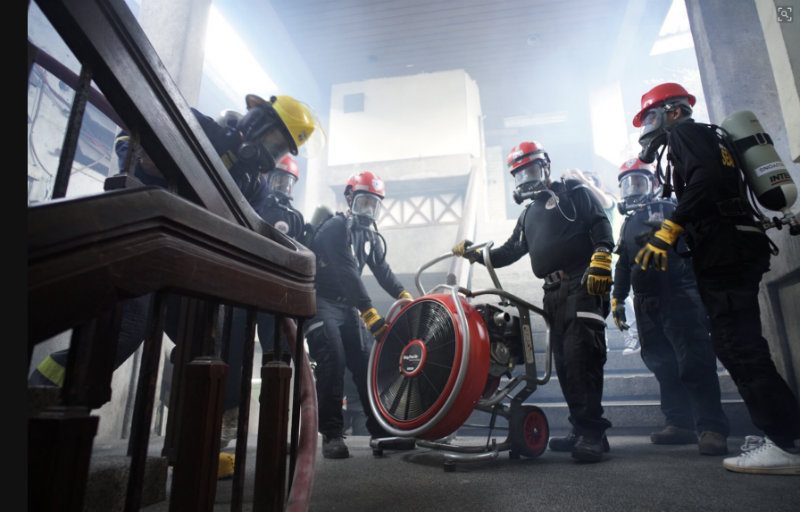
MANILA, Philippines – At exactly 4:00 pm, the siren rang at different parts of Metro Manila, warning everyone that a strong earthquake just hit the capital region.
Residents and employees quickly performed the “duck, cover, and hold” exercise. Almost instantly, responders and firefighters headed to buildings gravely affected by the earthquake.
Fortunately, it was all part of the drill.
Coordinated by the Metropolitan Manila Development Authority (MMDA), different local government units, government agencies, and private companies in Metro Manila and nearby provinces participated on the first day of the #MMShakeDrill on Friday, July 14,
“Ang goal talaga namin dito sa metro-wide city drill ay mai-test ang responses ng local governemnt sa kamaynilaan, sa city or town-level hangang sa barangay. Ang ating hangarin ay ang mga pamilya at barangay ay kasali para makita kung gaano sila kahanda,” Department of Science and Technology Undersecretary Renato Solidum said in an intervew with Rappler.
(The goal of the metro-wide city drill is to test the responses of the local government units in Manila, from the city, town, and barangay level. We want to involve families and barangays in the drill to see their level of preparedness)
The drills, scheduled to happen from July 14 to 17, is considered timely given the country’s observance of the National Disaster Resilience Month in the month of July.
The scenarios performed by different LGUs for #MMShakeDrill aims to foster a culture of preparedness among residents of Metro Manila in anticipation of the movement of the West Valley Fault.
The movement of the fault that is predicted to happen within our lifetime is expected to trigger a 7.2-magnitude earthquake. Studies estimate that the “Big One” is expected to kill at least 31,000 people and paralyze the nation’s economy. (READ: What dangers await when the West Valley Fault moves?)
Here’s what happened on the first day of the metro-wide earthquake drill:
North Quadrant
The North Quadrant’s incident command post was located at the Veterans Medical Center. The North Quadrant is composed of Quezon City, Mandaluyong City, and San Juan City.
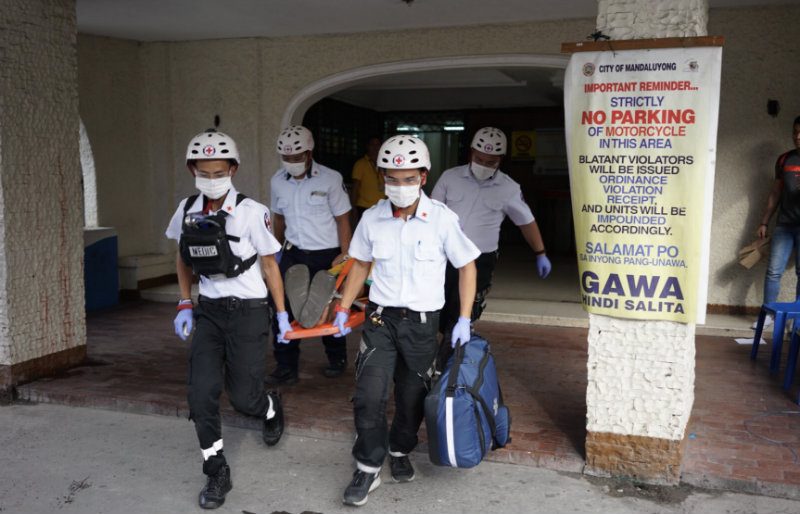
In Mandaluyong City, the simulation included firefighting and saving trapped victims from a building. Tents were set up at the City Health Office which served as the meeting point for evacuees.
Scenes from the #MMShakeDrill inside Mandaluyong City Hall complex | @MovePH @rapplerdotcom pic.twitter.com/UnEU4hXRjY
— Martin San Diego (@MartinSanDiego) July 14, 2017
Meanwhile, Quezon City Mayor Herbert Bautista said that their response plans are patterned after the Metropolitan Manila Earthquake Impact Reduction Study. He said that, while they can never predict what could arise in an earthquake scenario, he hopes that barangays and families learn enough from the drill to know what to do in case a real earthquake strikes.
“Hindi lang kami nagte-training ng city employee, pati mga barangays and homeowner associations sa barangay level. We also have a plan for the vulnerable sectors like PWD and children,” Bautista added.
(We are not only training city employees. We also involve barangays and homeowner associations from the barangay level)
All 142 barangays in Quezon City particpated in the metro-wide earthquake drill.
East Quadrant
The East Quadrant’s incident command post was located at the LRT 2 Santolan Depot. The East Quadrant is composed of Pasig City and Marikina City.
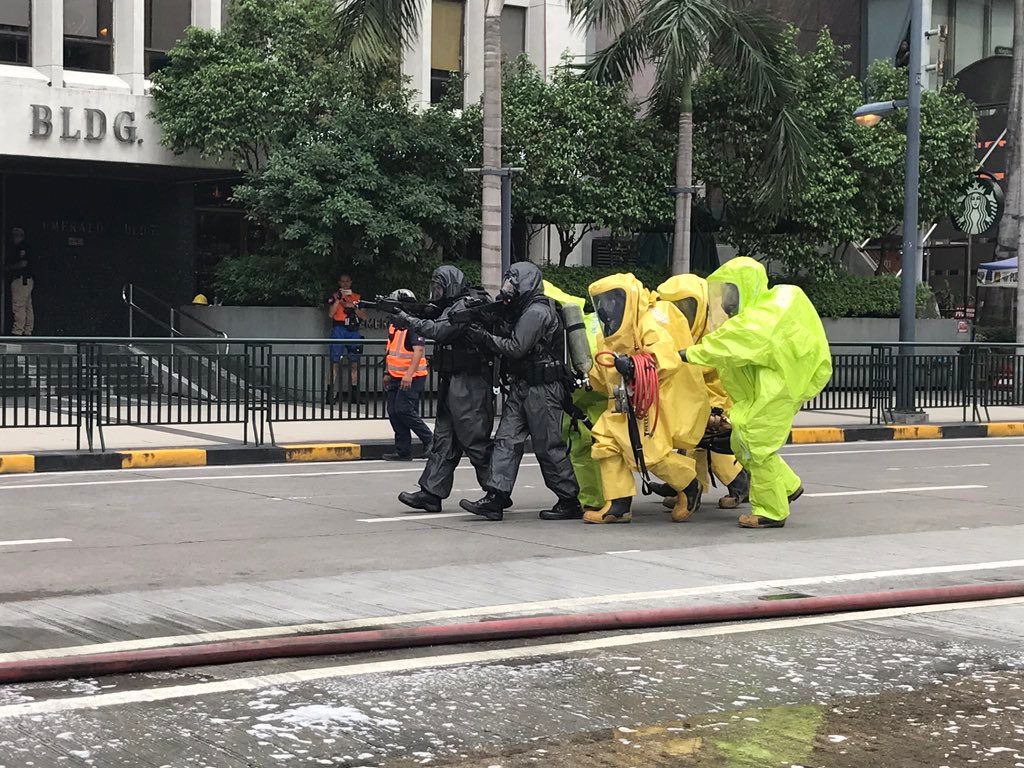
The earthquake drill started an hour earlier in Pasig City. At 3 pm, the local DRRM office conducted a man-made scenario drill involving a terror attack at the Orient Square Hotel in Pasig City. This is the first time the local DRRM involved the Special Weapons And Tactics (SWAT) and paramedics in an earthquake drill.
Pasig City is known for their strong disaster risk reduction programs. In 2012, the city became a Hall of Famer in Gawad Kalasag – the premier national disaster management recognition program given by the National Disaster Risk Reduction and Management Council (NDRRMC) – as the Best Government Emergency Response Managers. A year later, they were named the Best City Disaster Council in the country by the same awarding body.
“Nagsimula kami halos sa wala. Ang ginawa namin every year, base sa mga exercise, kung saan kami nagkukulang. Katulad ngayon, may assessment kami. So dapat next year, taun-taon, may improvement. Hindi ka titigil… lahat ng anggulo at aspeto ng paghahanda ay dapat mong paghandaan,” Pasig City DRRM chief Ritche Van Angeles said when asked about his tips for other local goverment units.
(We started with almost nothing. What we did was, every year, based on our exercises, we determined our weaknesses. For example, this year, we have an assessment of our drill. Next year, every year, we should see improvement. The process of disaster preparedness is continuous. We should look at all aspects of disaster preparedness)
EAST QUADRANT, PASIG: CHEMICAL LEAK follows after shooters fire their guns #MMShakeDrill @rapplerdotcom pic.twitter.com/DHeQx5nW9j
— Gari Acolola (@gariacolola) July 14, 2017
EAST QUADRANT, PASIG: Shooters continue to invade the Orient Square. Fires continue inside the building #MMShakeDrill @rapplerdotcom pic.twitter.com/jGvGp78sPs
— Gari Acolola (@gariacolola) July 14, 2017
Right after the one-hour activity, the local DRRM office conducted a drill simulating the hazards in an event of a 7.2 magnitude earthquake. According to Angeles, all buildings in Pasig City were required to join the earthquake drill.
The drill involved various scenarios such as managing chemical leaks; saving trapped bodies in collapsed buildings and vehicles; and dealing with fire.
In Marikina City, they simulated rescue operations after the “collapse” of the Marikina bridge. The LRT-2 Santolan Depot in Marikina City was also designated as one of the evacuation camps for the East Quadrant.
Responders also headed to the LRT to apply first aid to affected civilians inside the public train.
West Quadrant
The West Quadrant’s incident command post was located in Intramuros. The West Quadrant is composed of Valenzuela City, Malabon City, Navotas City, Caloocan City, and the City of Manila.
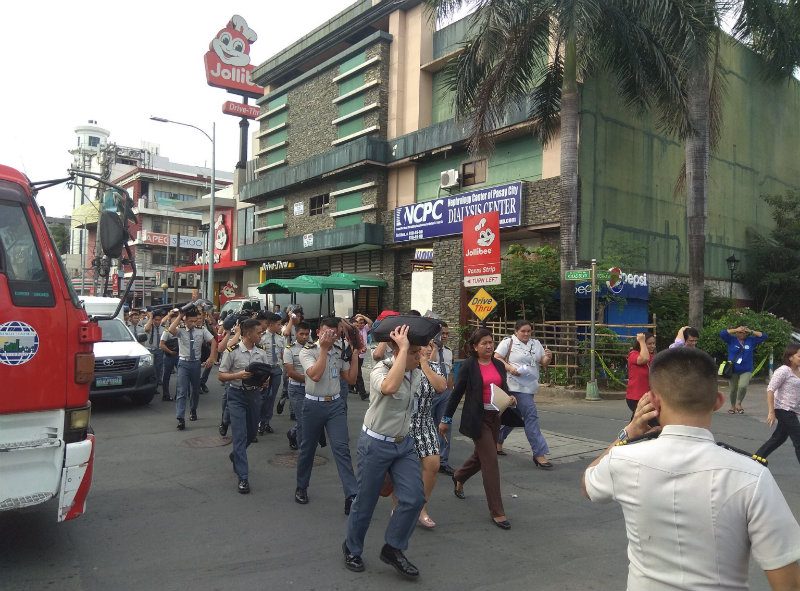
In Valenzuela City, the LGU tested its response in case an earthquake and terror attack hit the city simultaneously. During the drill, counter-terrorst soldiers responded to the scenario after a few minutes.
According to VDRRMO officer-in-chief Arnaldo Antonio, half of the city’s 600,000 total population can be accomodated by the open areas in the city.
Fire fighters extinguish the burning vehicle, ending the simulation. #MMShakeDrill pic.twitter.com/mPZxN2REHn
— Timothy Gerard (@Timothist) July 14, 2017
Awaiting rescuers and counter terrorist groups at the PLV campus. #MMShakeDrill pic.twitter.com/wLY7wQqcxh
— Timothy Gerard (@Timothist) July 14, 2017
Antonio added that, for their disaster response plan, they capacitated communities to serve as responders.
“Sa iba’t ibang communities namin, nakipagugnayan kami sa mga homeowners association. Ito yung tinatawag na mga urban poor communities. Very densely populated..Sila yung tinrain namin from incident to response,” Antonio added.
(In our communities, we coordinated with different homeowners assocations. They are the urban poor communities – very densely populated. We trained them to respond to different incidents)
In Malabon City, the local government divided their 21 barangays into 4 staging areas. Meanwhile, in Caloocan City, their earthquake drill scenarios involved evacuation in case flood hits the city should should the La Mesa Dam overflow.
Evacuees headed to the city’s designated evacuation center at the University of the East-Caloocan.
South Quadrant
The South Quadrant’s incident command post was at the National Capital Region Police Office (NCRPO) at Camp Bagong Diwa. For this year’s earthquake drill, MMDA also held its command center at the South Quadrant in Camp Bagong Diwa.
At around 4 pm, MMDA Chairman Danilo Lim arrived at Camp Bagong Diwa to head the command center and wait for immediate assessment from affected LGUs.
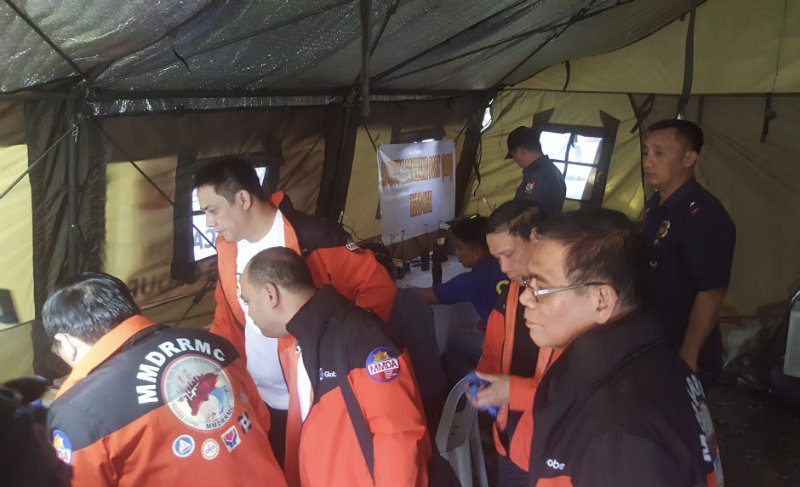
The South Quadrant is composed of Makati City, Pasay City, the municipality of Pateros, Parañaque City, Taguig City, Las Piñas City, and Muntinlupa City.
In Muntinlupa City, the LGU simulated a fire incident caused by a damaged fuel pipeline along the National Road in front of PURE GOLD Agro Homes, in Brgy Putatan, Muntinlupa.
“Isa-simulate natin na dahil sa ground shaking nabutas yun…and then massive fire,” Ronald Suitado, Training Division Head of MUNTINLUPA CDRRMO, said.
There are two fuel pipelines, one 16 inches in diameter and another, 14 inches. The said scenario will test the response and resiliency of the PUREGOLD Disaster Repsonse Team or any private establishment in case a for incident happened due to damage fuel pipeline, Suitado said.
In Parañaque City, the LGU tested its communication system and coordination with local barangays. It has designated Loyola Memorial Park, Manila Memorial Park, and the El Shaddai International House of Prayer at the Amvel City Ground as the evacuation areas for Parañaque residents.
Taguig City has tapped 12 barangays to participate in the drill while Las Piñas conducted rescue operations involving collapsed structures and vehicle crash incidents. – Rappler.com
Add a comment
How does this make you feel?
There are no comments yet. Add your comment to start the conversation.